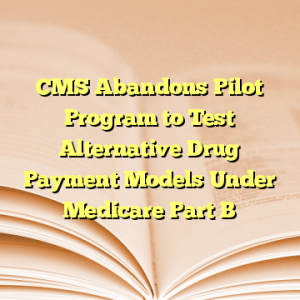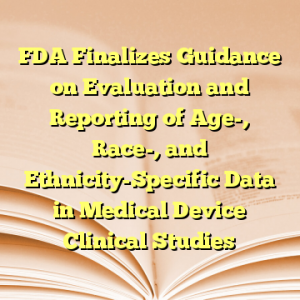
By McKenzie E. Cato*, David C. Gibbons & Michelle L. Butler –
On October 9, 2017, California Governor Jerry Brown signed into law a bill (SB 17), which imposes new notification and reporting requirements on pharmaceutical companies, health care service plans, and health insurers. Among the many reporting obligations under SB 17, we describe below only those obligations associated with drug pricing. Other state legislatures have undertaken similar efforts intended to promote transparency in drug pricing (see our posts on a Nevada bill, here, and a Vermont law, here). Maryland enacted a law that prohibits an “unconscionable increase” in the price of a generic drug, which is the subject of ongoing litigation (see our posts here and here).
Manufacturer Reporting: WAC Increases of 16% or More
Pharmaceutical manufacturers with prescription drugs purchased or reimbursed by a state purchaser, licensed health care service plan, health insurer, or pharmacy benefit manager (PBM) have reporting requirements under SB 17. It is important to note that, under California law, manufacturers include not only those entities that produce prescription drugs, but also those that repackage prescription drugs as well as certain types of entities that distribute those drugs. See Cal. Bus. & Prof. Code § 4033. A manufacturer with any prescription drugs that have a wholesale acquisition cost (WAC) of more than $40.00 for a course of therapy must notify each purchaser if it will increase the WAC more than 16%. The 16% increase threshold includes the current increase and the cumulative increases that occurred within the previous two calendar years prior to the current year. Notice must be given to the purchaser at least 60 days prior to the planned effective date of the increase. PBMs receiving notice of WAC increases greater than 16% must notify their contracted large public and private purchasers (covering >500 lives) of such increases as well. California’s Office of Statewide Health Planning and Development (OSHPD) Legislative Affairs office indicated that the effective date for these notification requirements and other requirements which do not specify a delayed implementation date is January 1, 2018.
Starting in January 2019, prescription drug manufacturers must report to the OSHPD on a quarterly basis the following information for each drug with an increase in WAC of over 16%:
A description of the financial and nonfinancial factors used to make the decision;
A schedule of WAC increases for the drug for the previous five years;
If the drug was acquired by the manufacturer in the last five years, other information about the WAC history, purchase price, and the previous owner;
Patent expiration information;
Whether the drug meets the definition of multiple source drug, innovator multiple source drug, noninnovator multiple source drug, or single source drug under the Medicaid Drug Rebate Program (42 U.S.C. § 1396r-8(k)(7)(A));
A description of the “change or improvement in the drug, if any, that necessitates the price increase”; and
The volume of U.S. sales for that drug in the previous year.
Manufacturer Reporting: New Drugs
If a prescription drug manufacturer plans to introduce a new prescription drug to market at a WAC that exceeds the threshold set for a specialty drug under the Medicare Part D program, it must notify OSHPD in writing within three days after release of the drug in the commercial market. The specialty tier threshold for Calendar Year (CY) 2017 (and CY 2018) is $670 per month. CMS, Announcement of CY 2018 Medicare Advantage Capitation Rates and Medicare Advantage and Part D Payment Policies and Final Call Letter and Request for Information, 152-153 (Apr. 3, 2017).
The notification must include the following information:
A description of the marketing and pricing plans used in the launch of the new drug in the United States and internationally;
The estimated volume of patients who may be prescribed the drug;
Whether the drug was granted breakthrough therapy designation or priority review by FDA prior to final approval; and
The date and price of acquisition if the drug was not developed by the manufacturer.
Additional Manufacturer Reporting Provisions
OSHPD will publish the information obtained under the two sections above on its website at least quarterly. SB 17 states that the “information shall be published in a manner that identifies the information that is disclosed on a per-drug basis and shall not be aggregated in a manner that would not allow identification of the drug.”
Manufacturers may limit the information reported under the two sections described above to information that is otherwise in the public domain or that has been made publicly available.
Finally, manufacturers may incur civil penalties of $1,000 per day following the notification period for noncompliance.
Health Insurer and Health Plan Reporting Related to Prescription Drugs
With regard to health insurers and health care service plans that must, under California law, report rate information to either the state Department of Managed Health Care (DMHC) or Department of Insurance (DOI), SB 17 requires reporting to DMHC or DOI the following cost information for all covered prescription drugs no later than October 1 of each year, starting in 2018:
The 25 most frequently prescribed drugs;
The 25 most costly drugs by total annual plan spending; and
The 25 drugs with the highest year-over-year increase in total annual plan spending.
DMHC and DOI must compile this information into a public report “that demonstrates the overall impact of drug costs on health care premiums.” The report must be published on their websites by January 1 of each year.
SB 17 also requires health plans with large group health care service plan contracts and health insurers with large group health insurance policies to disclose the following information for covered generic, brand, and specialty drugs dispensed at a plan, network, or mail order pharmacy for outpatient use:
The percentage of the premium attributable to prescription drug costs for the prior year for each prescription drug category;
The year-over-year percentage increase in per-member, per-month total health plan spending for each prescription drug category;
The year-over-year increase in per-member, per-month costs for drugs, compared to other components of the health care premium;
The specialty tier formulary list;
The percentage of the health care premium attributable to prescription drugs covered under the medical benefit;
Information on the use of a PBM, if any, along with information on which components of prescription drug coverage are managed by the PBM; and
The PBM or other manager name(s).
We will continue to track implementation of SB 17 and similar legislation regarding drug pricing transparency in other states.
* Law Clerk








